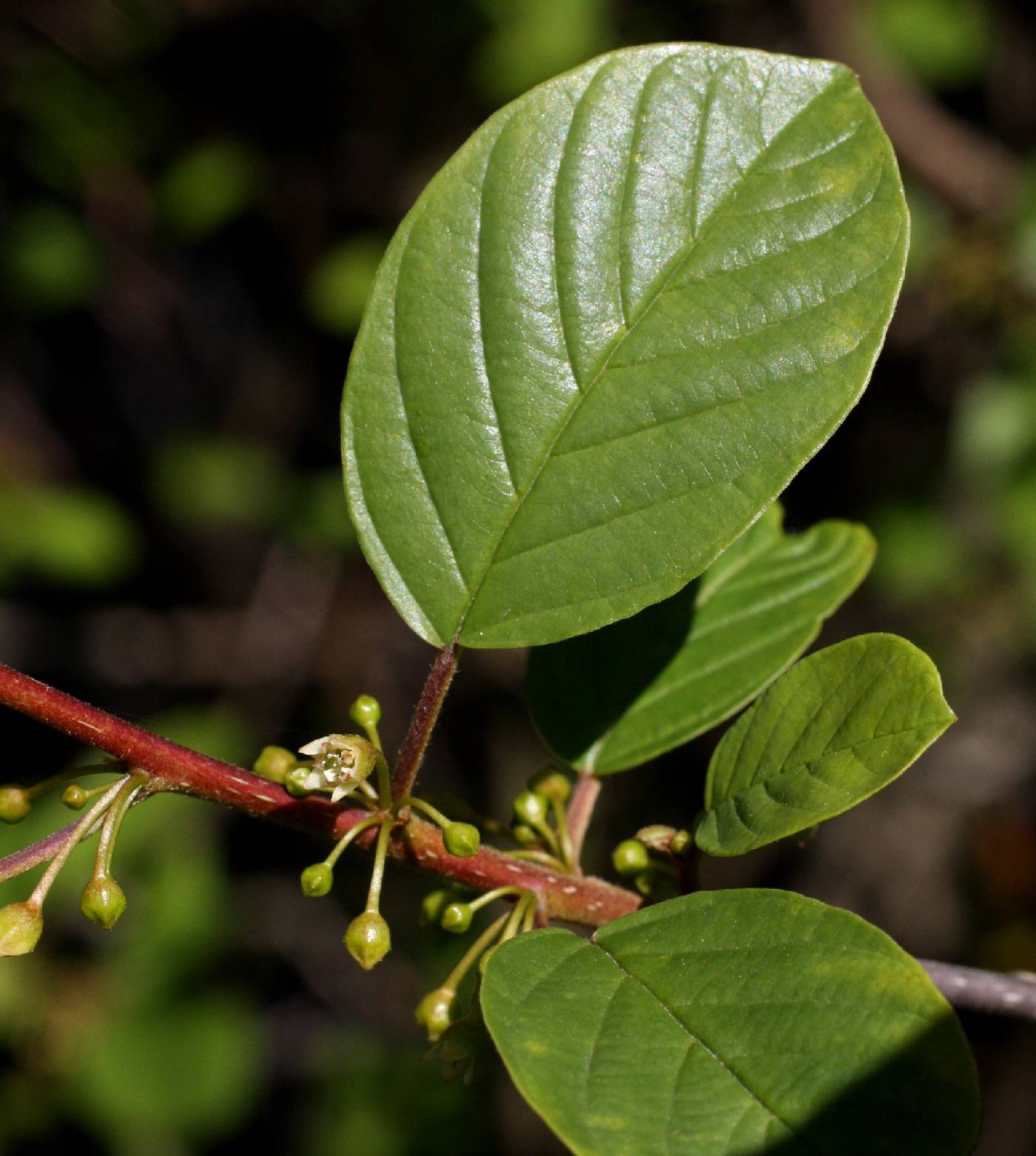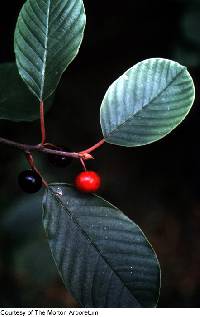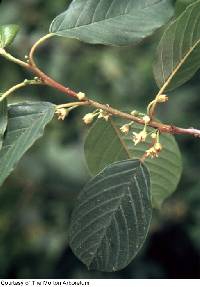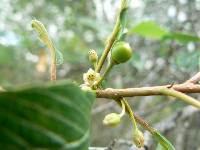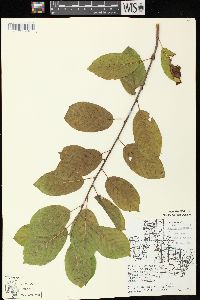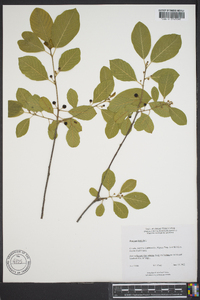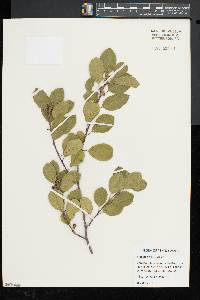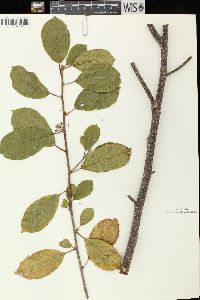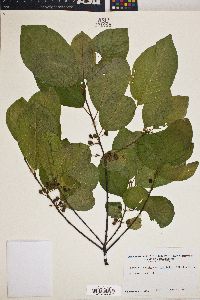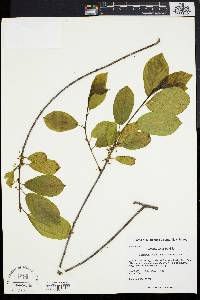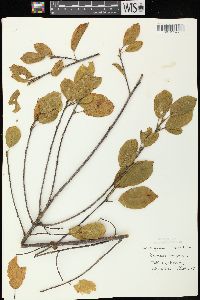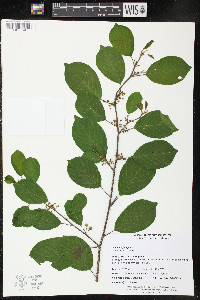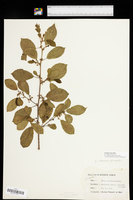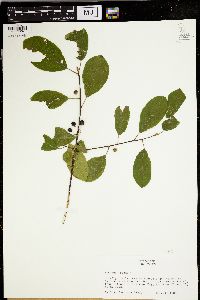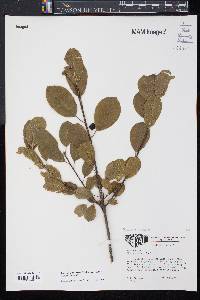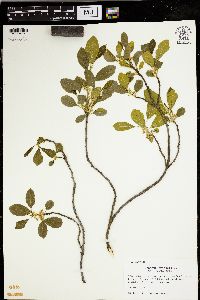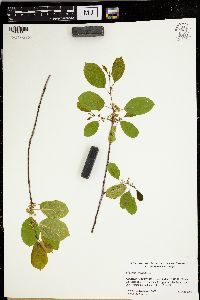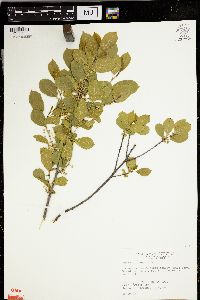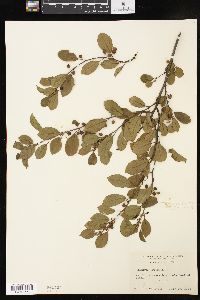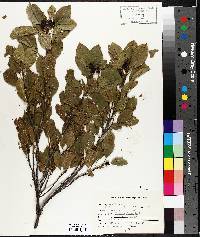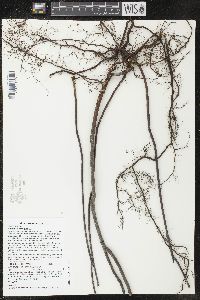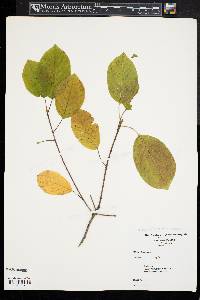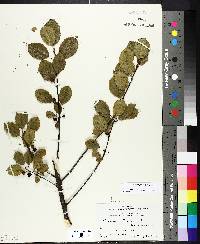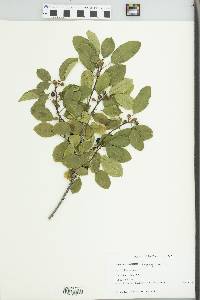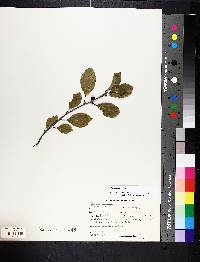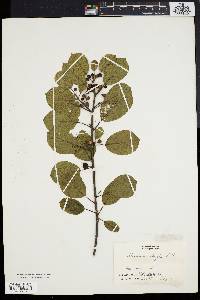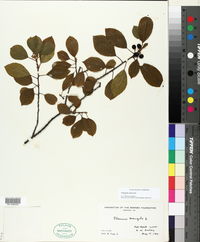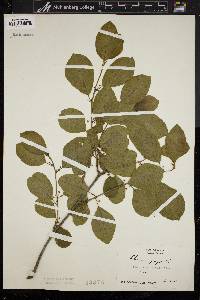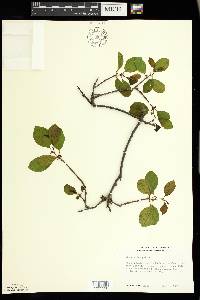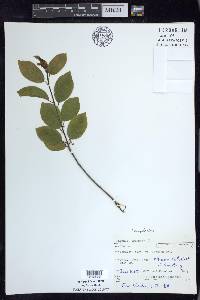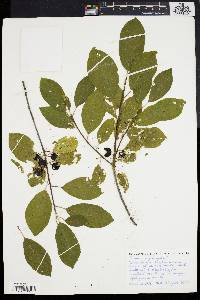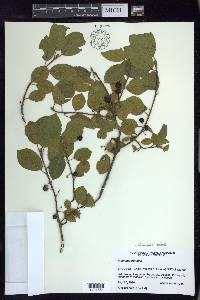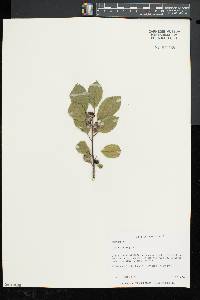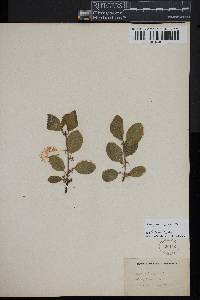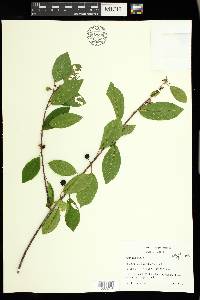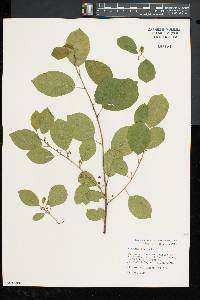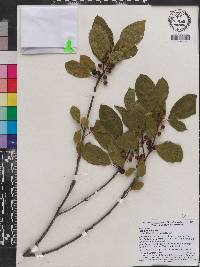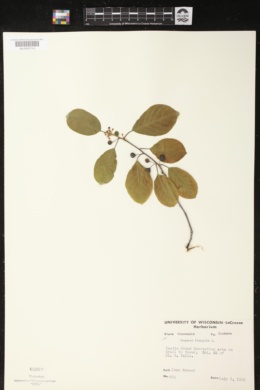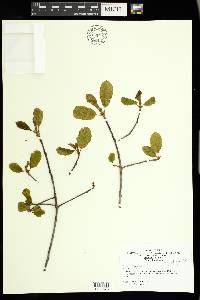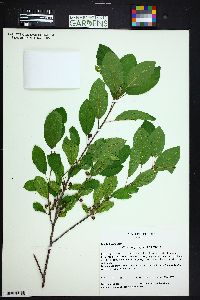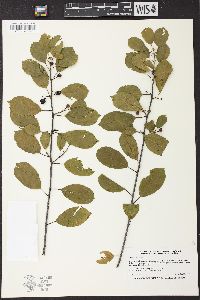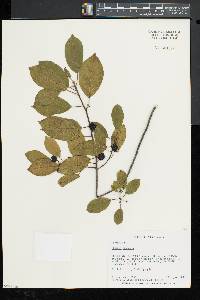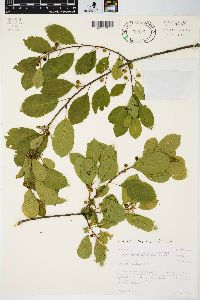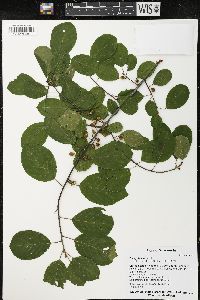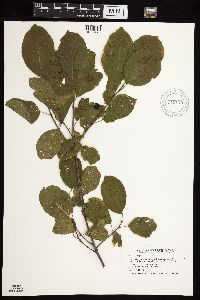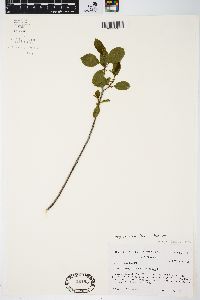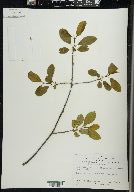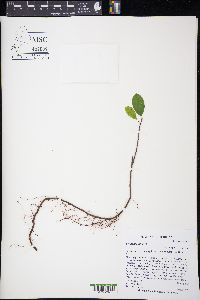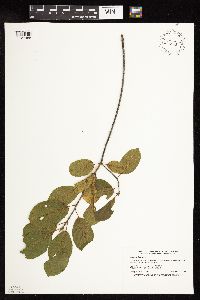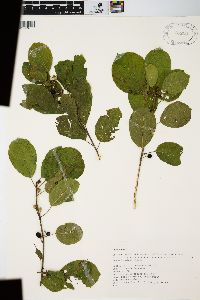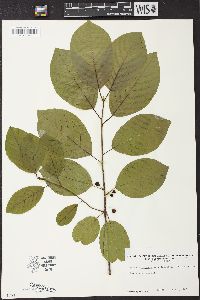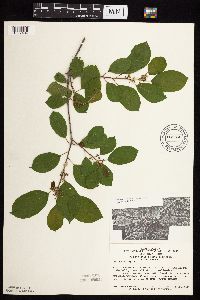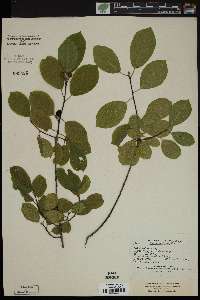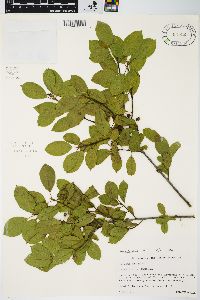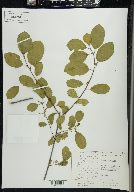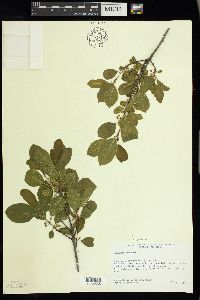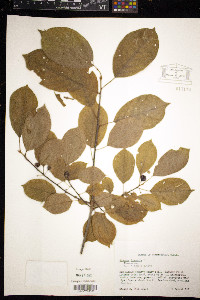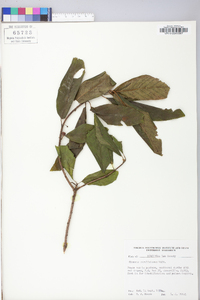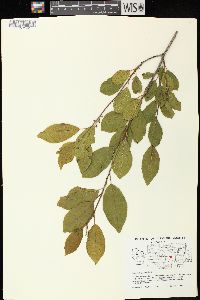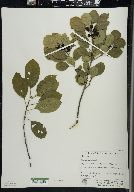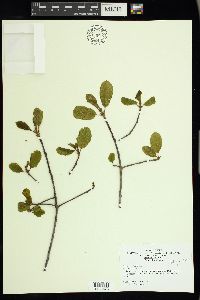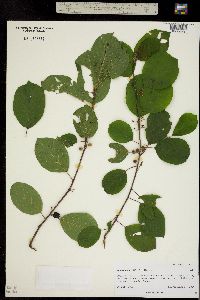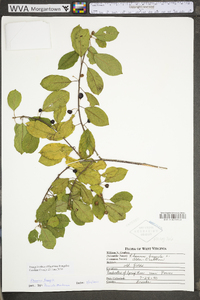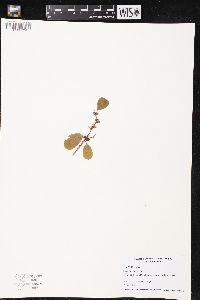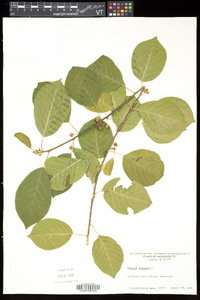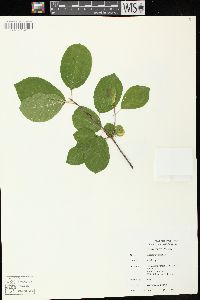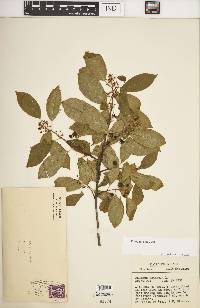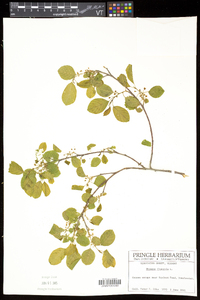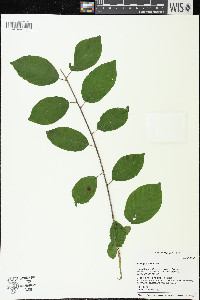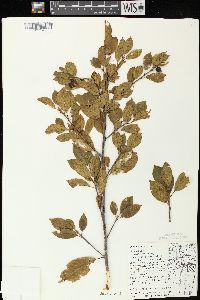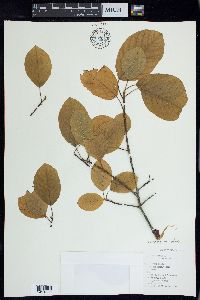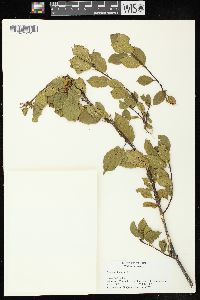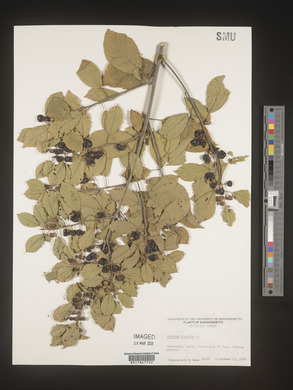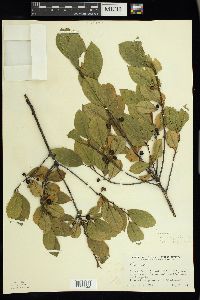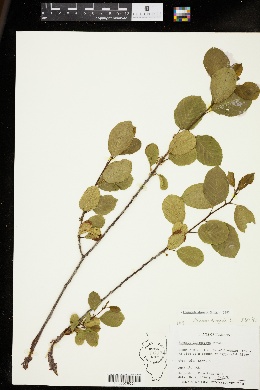Frangula alnus
|
|
|
|
Family: Rhamnaceae
Glossy False Buckthorn, more...glossy buckthorn
[Rhamnus frangula L., moreRhamnus frangula subsp. columnaris hort., Rhamnus frangula var. angustifolia Louden] |
Shrub or small tree 3 - 7 m tall Leaves: alternate, stalked, shiny dark green above, lighter and lightly hairy beneath, 2 - 8 cm long, 1 - 4 cm wide, oblong to inversely egg-shaped with a rounded to broad wedge-shaped base and a pointed tip, non-toothed, with eight or nine pairs of veins. Flowers: borne in clusters of two to ten in the leaf axils of new growth, creamy green, tiny, petals (five) inversely egg-shaped. Fruit: fleshy with two or three center seeds (drupe), red changing to purplish black, 6 - 9 mm wide. Twigs: slender, hairy when young, becoming smooth with age, covered with light gray vertical corky spots (lenticels). Terminal buds: brownish, hairy, lacking scales (naked). Form: upright, oval to spreading, low-branching. Similar species: Rhamnus frangula, Rhamnus alnifolia, Rhamnus arguta var. velutina, and Rhamnus lanceolata all have alternate leaf arrangements and usually lack spines at the tips of the stems. Rhamnus alnifolia grows to 1 m tall, has oblong to elliptic or egg-shaped leaves with irregularly round-toothed margins, flowers lacking petals but having five sepals and stamens, and fruit usually containing three seeds. Rhamnus arguta var. velutina reaches 3 m tall and has broad oval to egg-shaped leaves with sharply awl-shaped teeth and a hairy lower surface. Rhamnus lanceolata grows to 2 m tall and has lance-shaped leaves with finely toothed margins and a hairy lower leaf surface. Flowering: mid May to early September Habitat and ecology: Introduced from Eurasia as an ornamental shrub in the 1800s, R. frangula produces abundant seeds that are distributed by birds. It is common in disturbed bogs, calcareous fens, and upland wooded areas, where it displaces the native vegetation. Elsewhere in the eastern and midwestern United States, the plant is found in wetlands such as bogs, marshes, river banks, fens, and pond margins, and in dry locations like sand forests, roadsides, and prairies. Occurence in the Chicago region: non-native Notes: This species is still used as a landscape shrub, but should be replaced by non-invasive and more ornamental species. The Illinois Exotic Weed Act states that this species cannot be purchased, sold, distributed, or planted in Illinois without a permit issued by the Department of Natural Resources. Etymology: Rhamnus is the ancient Greek name for buckthorn. Frangula is an ancient Greek name, maybe meaning "a tree with fragile wood." Author: The Morton Arboretum Shrub to 7 m; lvs all or mostly alternate, oblong or usually obovate-oblong, 5-8 cm, commonly more than half as wide, acute to abruptly short-acuminate, entire or with a few marginal glands near the tip; umbels sessile, with 2-8 fls, appearing after the lvs; pedicels glabrous or subglabrous, mostly unequal, 3-10 mm; fls perfect, 5-merous; pet broadly obovate, scarcely clawed, cleft at the tip, 1-1.4 mm; styles united; fr red, turning nearly black, with 2-3 stones; 2n=20-26. Native of Eurasia, escaped from cult. from Que. and N.S. to N.J., Ind., and Ky., especially in wet soil. May, June. (Frangula alnus) Gleason, Henry A. & Cronquist, Arthur J. 1991. Manual of vascular plants of northeastern United States and adjacent Canada. lxxv + 910 pp. ©The New York Botanical Garden. All rights reserved. Used by permission. From Flora of Indiana (1940) by Charles C. Deam Freely escaping about Interlaken in La Porte County. First reported by J. A. Nieuwland. In 1938 S. W. Witmer of Goshen College found a colony about 15 feet high in low, mucky soil in sec. 34 about 2 miles north of Goshen, Elkhart County. ...... Indiana Coefficient of Conservatism: C = null, non-native Wetland Indicator Status: FACW
|

